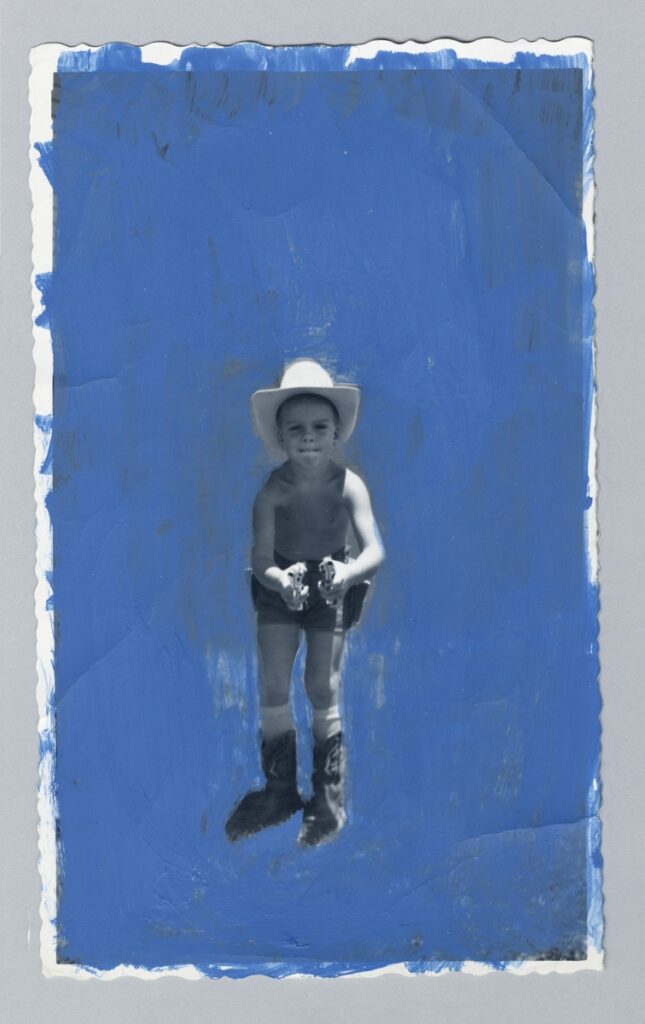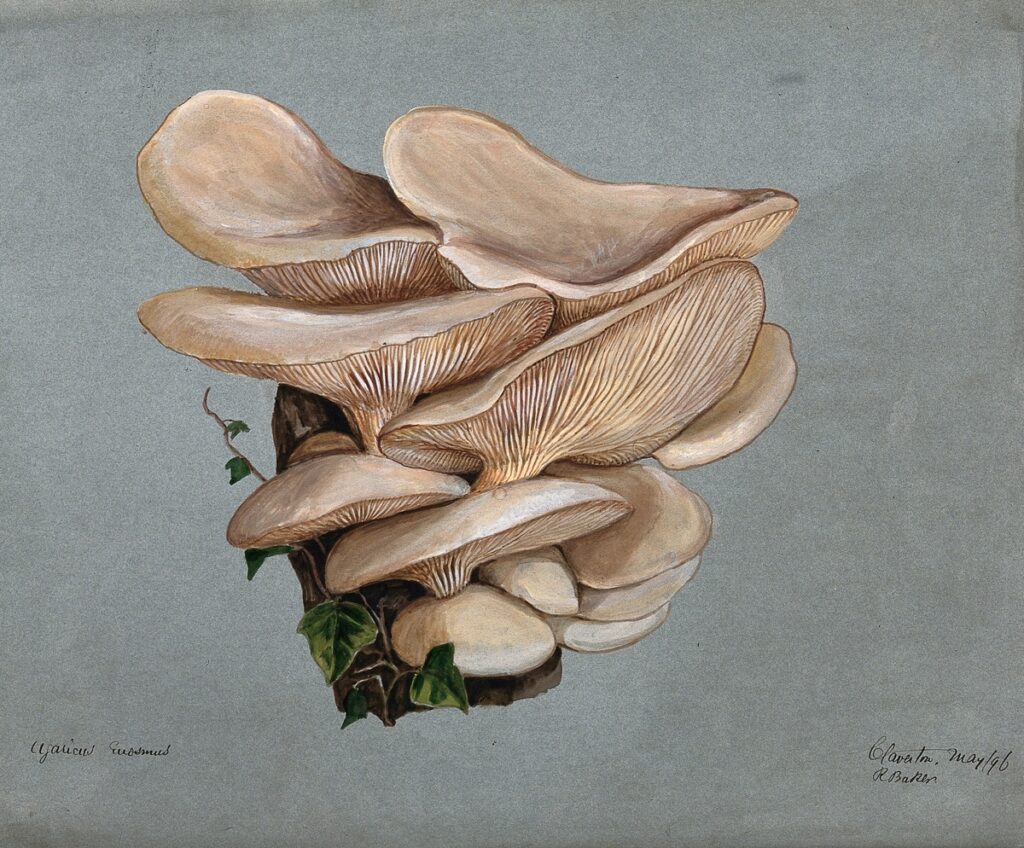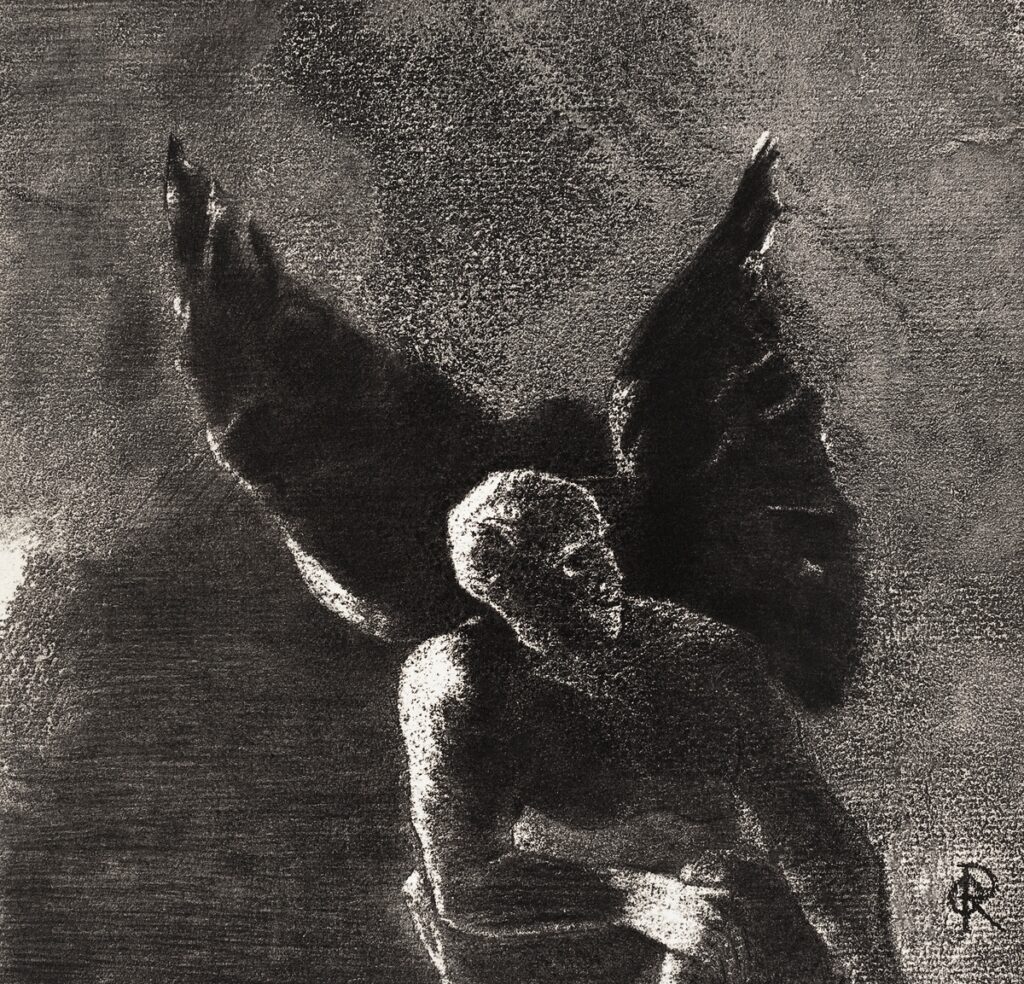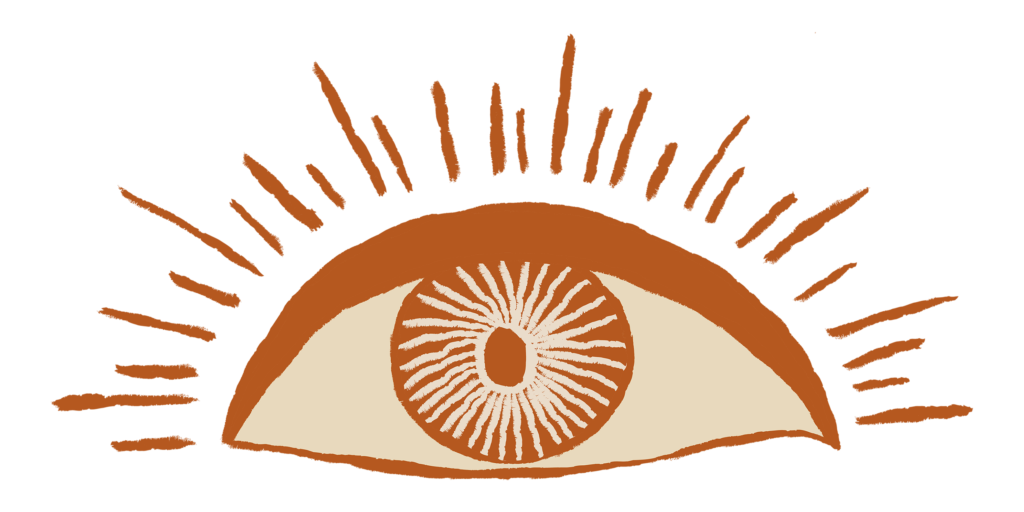| Title | What stands out | Read this when | |
| We Need to Talk About Kevin by Lionel Shriver | We are still in community after we do terrible things, though we may gloss over that. How to relate to a horrible act is the heart of this epistolary novel from Shriver, whose main character walks a fine line between dedication and absolute revulsion | You want to swallow something a bit nasty that poses hard questions about how to love other horrible humans. | |
| What Moves the Dead by T. Kingfisher | Here’s a retelling of Poe’s Fall of the House of Usher, made wonderfully weird and creepingly icky with its infectiously Gothic tone and striking visuals. | You wonder if the undead must always be monstrous. | |
| Grendel by John Gardner | Oh, Grendel. A monster, and also a character, as Gardner tells it, who struggles to escape monstrousness. Does he just need to “be himself”? Does he actually crave hope? This brief book proves an existential romp, but with plenty of pathos, too. | You fancy somewhat tortured but soulful coming-of-age stories told a bit differently. | |
| The Perfect Storm by Sebastian Junger | We, of course, are often monsters of our own making But nature can take its turn as well (or at least it seems to, from our viewpoint). Here Junger rides into the teeth of the storm and meets an uncontrollable force. | It’s time for a crashing narrative about struggle and doom. | |
| Evil by Roy F. Baumeister | If you could step into the psychology of “evildoers” to better understand their mindsets, would you? Baumeister takes a stab at it in hopes of helping untangle the troublesome questions of why we hurt each other so much. | You’re always wanting to understand more and are willing to stretch a bit. |
Do you ever feel like a monster? I do. Sometimes I even like it. Certain days, the monstrousness surfaces because I feel awkward or like an outcast – typical backyard insecurity stuff. Other days, the monstrousness contains more of a sense of spiky glee. It makes me want to bite things; it holds an intriguing, grinding texture.
Fight the monstrousness inside too hard and you’ll end up skewed, I think. You’ll wind up divided from yourself, disassociated from elements of your personality that nudge you toward what you’re missing. We find monsters appealing, I think, because they’re so useful. They’re metaphors; they fascinate; they get to do things we only wish we could.
In literature, monsters are the villains and the Others at the same time they also summon pathos. Even today, hundreds of Frankensteins later, monsters still haunt and thrill us. They tempt us, on one hand, with toothsome wildness. On the other hand, they warn us about what we cannot afford to become. To ignore them is to overlook powerful lessons about how to accept feral feelings. We might even fall prey to monstrous things or over identify with them. Can monsters and monstrous emotions ever be tolerated or must they be driven absolutely beyond the pale?
Face the horror of loving a monster you helped create with We Need to Talk About Kevin by Lionel Shriver
Shriver’s cloying narrator, Eva, is a letter writer who just can’t stop. Maybe her compulsive letter writing helps her pursue hidden meanings, or maybe she is trying to defend herself from what her teenage son has done. Again and again she throws herself against the page, marshaling words that are alternatingly searing, prickly, unconvincing, evasive, and sickly sweet. She’s a narrator dealing with a life that diverged a long time ago from what she ever desired. And yet a dull, unsettling thump of satisfaction beats throughout the novel. She may, we discover, share more with her murderous son than she admits, and these ambiguous letters may be as close as she can come to examining her own monstrousness.
Read this novel having been advised that it is not comfortable. It covers the well-trod soil of school shootings while occasionally slipping into saccharine potholes. It’s gruesome; it’s not sympathetic; it pecks away at the reader like a woodpecker with an acid-dipped beak. Yet it also scratches at the edges of scabs that just don’t seem to heal, at least not in America, where a single person’s bitterness can terminate an entire classroom.

Shriver makes us stare this fact in its malevolent face. She batters us with questions about the nature of violence and domesticity, probing at uncomfortable, often quietly rotting facts about motherhood. Mothers, Shriver points out rather pointedly, do not always want to be mothers or do not always feel warmth toward certain children. Is this due to some biological flaw or to over-identifying with ugly traits they may share with their offspring? In Shriver’s world, children claw uncomfortable realizations out of their mother’s very body. If, for example, you were quite confident your child was capable of mass murder, would you consider murdering him yourself? And if you find yourself unable to arrange his own death, what do you owe your community once your son kills other sons and daughters?
“I’d been living under the rose my whole life, had been blind to the color red. But then it wasn’t true that we don’t notice what we don’t notice. Instead, we don’t want to notice what we don’t want to notice.”
I cannot say I find Shriver’s narrator enjoyable, and yet I can understand her, to an extent. I, too, can be uncomfortable about the obligations society pushes upon mothers, about the gaping neediness of children, about the ability of a single person to grievously wound an entire community, and about the inadequacy of our justice system, much less our lack of support for healthy communities. It seems we lean toward disaster, in that we engineer our communities to be lonely, car-dominated places that make it difficult to meet friends and easy to stuff ourselves with insufficiently comforting things. Yet there is no excuse for the murders that lacerate our communities (just as there is no excuse, I might point out, for the quieter deaths caused by cars going too fast or by sitting relatively still, eating unadvisable foods).
What are we to do? How do we prevent these terrible things; how do we reconcile ourselves to community if we are partially guilty? How, in other words, does a community that failed to recognize deadly red flags acknowledge its own culpability; how do you reconcile yourself to the monster next door and the one inside your skin?
Not comfortably, I don’t think. Not comfortably at all. And so perhaps it’s fitting that Shriver’s book is a grating read and that the only comfort to be found within it is of the grimmest sort. At its marrow, this is a psychologically harrowing story that asks how far we should go in loving people who do terrible things.
Where’s the bibliotherapy?
How responsible are we for the reprehensible or terrifying things others do around us? How much influence can we exert?
That’s the kind of terror Shriver presents here. Unsettling as these kinds of ethical questions can be, isn’t it better to think about them before you notice terrible events unfolding in real life? You can:
- Notice terrible clues. It’s a common instinct to gloss over disturbing observations. Surely he’s only going to hit me this one time. Surely she isn’t abusing that child’s trust. He’s just in a goth phase. She didn’t mean to hurt herself. If we all overlook what disturbs us, however, where does that leave us? And if we do decide to act, how far can we extend curiosity and empathy before we decide that we must also limit a person’s ability to hurt others?
- Contemplate the nature of foreboding. A gut-twist of premonitory foreboding should be taken seriously. It’s uncomfortable to convince yourself that something may actually be wrong and cling to hopes that things may still work out, but to ignore repeated warnings is to roll a horrible pair of dice. This is the uncomfortable land of speculating about the worst. We want to remain positive and cling to hopes we may skirt the danger. Maybe an abuser will rein in his rage; maybe a depressed teenager who hints about wanting to die really is “only being dramatic.” Positivity and inertia can be blinding though. Perhaps you do not want to wait until the worst has happened? Is there anything you can do now?
- Test trust. Do you wish to extend blind trust to others? Or do you prefer a more probabilistic trust, in which you set limits, react proactively, and protect yourself and others when possible? Eva’s denial (or, more cynically, her tacit permissiveness) enables terrible things to occur. Are there ways denial is preventing you from taking care of yourself and others, or from growing? What might happen if you let yourself examine what is really happening around you?
- Is there ever anyone beyond the pale, too psychopathic or twisted to live in community? This question gives me all kinds of pause, and I do wrestle with it. I wonder if it is possible to relate to someone like Kevin, and I wonder how much I can extend warmth to someone like that if it helped prevent harm to others. Would I require someone like that to seem sincerely remorseful before rejoining others? Would I give a second chance? Or is it better to morally abandon a person like that, or at least leave them in hopes someone less hurt by them may prove equal to walking beside them into rehabilitation and restitution?
- I also think it’s helpful to deeply consider the ways we collectively enable destructive behavior. When we all turn away from environmental pollution, for example, or when we tolerate declining education and social support or permit people with established patterns of violence access to weapons, we must ask ourselves how to apportion guilt. We have to ask ourselves if crossing our fingers and hoping for the best even in the face of clear indicators of trouble is just and fair to those who eventually become victims.
This book pushed me to acknowledge that, while I don’t know the future and honestly wish for the best, I need to remain clear-eyed. I need to express myself before it is too late (what if, for example, Eva had spoken up and never had a child in the first place?) I need to prepare for terrible things to happen and to remain open to whatever growth and realization flowers in the wake of horror.
A little more
- Sue Klebold’s has written a real-life account of a situation similar to the one Shriver portrays, A Mother’s Reckoning
- David Cullen has penned two books on the shootings, Columbine and Parkland
- Would restorative justice apply to Kevin?
- Your personal and communal safety is up to you, too…master common warning signs and do not be afraid to act if necessary.
- Read an interview with Lionel Shriver
Marvel at horror’s ability to draw us closer together with What Moves the Dead by T. Kingfisher
Poverty-stricken, alcoholic, and dead at 40 – Edgar Allen Poe’s own life story is a horror, much less his short stories and poems, which are still going strong 170 years after his death. Acclaimed filmmaker Mike Flanagan just made a series based on The Fall of the House of Usher, one of Poe’s most popular and well-known tales, which also inspires T. Kingfisher’s novel.
Not everyone enjoys a retelling, the literary equivalent of the cover song, but Kingfisher works hard to push beyond Poe’s original material. Her version retains all the morbid Gothic details while ladling in doses of biohorror and organic creepiness. There are also unnerving bunnies.
Poe’s story remains so resonant because it’s about an eternal theme: being rich and powerful enough to shield yourself from everyone else. Can you truly escape contamination, however? Both Poe and Kingfisher hint that no matter how high or thick a wall you erect, biology will out. Both authors are also not above reveling in this realization, dialing up the delicious gruesomeness as they revel in their protagonists’ lurid downfalls.

There’s a delight in seeing people who set themselves up as untouchable brought low. It may be a slightly ugly part of being human – to find yourself chuckling as an unbearably arrogant person bleeds out – but it’s an ickily enjoyable part of being human, too, an inner trumpet of glee at seeing hubris kicked back down into the dirt and disease with the rest of us. Sure, it’s an understandable urge, one driving preppers across the nation, to want to shelter away from unpleasantness, nuclear fallout, plague, and the rest of the threats community poses.
It’s an especially visceral urge, post-pandemic, when so many of us were urged to shelter in place and turn our rooms into quarantine chambers. That brought, of course, a degree of paranoia and stifling confinement to many; it wasn’t good for our mental or physical health. It also highlighted societal divisions we don’t normally discuss, such as the impolite fact that many of us locked our doors and ate takeout, relying on health professionals, food deliverers, sanitation workers, and others who didn’t have the luxury of hunkering behind walls and doors. We (of the white collars and sent-home workers) “made it” in relative comfort because we forced others to labor in a COVID miasma. Do you remember the sense of entitlement that spread, the pandemic measures that became trendy, even elevated to religious dogma; do you remember the strange, distanced parties that sprung up as we tried to stay six feet away yet eat our cake, too? We were–are–miniature Ushers in our towers, enjoying our seeming biological imperviousness. How does it feel?
It feels weird, I think. Weird and futile. Cloistering ourselves only amped up our often overly precious sense of fragility; keeping ourselves apart weakened our immune systems and compromised our ability to get along. Trying to be “above it all,” we turned ourselves into hypochondriacs and tiny dictators Amazoning ourselves into stultification. Obviously I’m opinionated and biased and making sweeping generalizations here.
I hope we got a taste of realization, however, of how we remain connected and of how trying to deny or dampen these connections weakens our entire social fabric, both psychologically and biologically. We cannot, in the end, hide forever; we cannot afford “purity.” Contamination–another word for contact with others–is actually what hones our immune systems and sands off our hubristic edges.
The lesson goes down sweeter with Kingfisher’s readable, hallucinogenic prose. While it’s a challenge to stretch a single short story’s worth of material to the length of a novel, Kingfisher pads Poe’s arc with enough original material to make for a shivery read on a cloud-scuttering night (with a mug of rishi tea at hand, naturally).
Where’s the bibliotherapy?
For me, it’s refreshing to see isolation cast as dangerous. Fungi has been getting more popular lately, perhaps because it’s such an appealing metaphor for societal connection. Though connections are invisible, they are often still there, and disrupting them can lead to surprisingly quick downturns. It’s amusing, perhaps, that we think we know so much, but can still be humbled so quickly by a pack of germs or other silent, tiny threats.
We are not so immune after all; we are, despite our amazing ability to develop vaccines and social workarounds, still working with relatively crude tools in the dark. We may wish desperately to be sophisticated and protected in sleek smart homes, but we are not, not really. We are still primates, still primitive, still fumblers unaware of what’s under our feet.
“Evil, Roderick had said. But it wasn’t evil that I was seeing here. It was alien, a monstrous alienness so far removed from what I understood that every fiber of my being screamed to reject it, so run, to get away.”
Just because we cannot comprehend something does not make it monstrous, however, just as people are not necessarily monsters simply because their need to breathe and live makes you feel threatened. Plots like Poe’s and Kingfisher’s give us a chance to examine how we try to separate ourselves and even glory in that separation; they ask us to examine what we may be missing out on.
Finally, they ask us to face our own fears. It’s so easy, when survival seems a matter of “me or him,” to pick oneself. Scientists have confirmed that feeling threatened narrows our field of vision and lowers our empathy. It becomes dangerous, our mind and body tells us, to look beyond our own pressing needs. Pursuing these perceived needs too avidly, however, can rapidly lead to conflict, societal breakdown, and a situation becoming much worse than it ever needed to be.
When you feel threatened, it’s a good time to evaluate the actual seriousness of that threat. It’s helpful to calm your breathing, look for mutually beneficial solutions, and remind yourself that acting in the moment is sometimes necessary, but can be maladaptive, too. What, for you, is a better way to handle fear?
A little more
- If you like mycological thrillers with gothic overtones, you might savor Silvia Moreno-Garcia’s Mexican Gothic
- For more on the dangers of becoming a biological hermit, read Eula Biss’s On Immunity: An Inoculation
- Master techniques to control fear of contamination
- Marvel at mushrooms with 10 intriguing documentaries
- Delve into apocalyptic thinking with Notes from an Apocalypse
Grendel by John Gardner
We like monster stories, sometimes, because we ARE the monsters. Or, at least, we feel sidelined and cast-out. We carry shame and guilt; we have disgraced our families or otherwise been thrown out; we’ve become laughing stocks, scapegoats, wandering Cains. We are Outside and we are Other. We are frigid-lonely and prowling far beyond the perimeter of any hearth fire. We are growling with pleasure and looking for things to destroy.
In this retelling, Gardner adopts the monster’s perspective. This was more innovative when Gardner wrote the thing scads of years ago. It’s a less innovative or surprising perspective today, but Gardner’s telling still holds up, largely because Grendel turns out to be a philosophical monster. In case you haven’t encountered Grendel before, philosophy is not exactly what you would expect from him, seeing as he was reportedly descended from Cain and likes to tear animals apart and raid the feasting halls of Viking lords. They don’t like this, and start to hunt Grendel down.
Gardner’s version, however, is not so much about Grendel’s attempts to dodge amped-up warriors as it is his quest to understand what the world is. Curiosity, it transpires, is what keeps Grendel from becoming an absolute monster. It may seem a bit absurd to watch him scuttering about, philosophizing to himself while chewing on bones, but as Grendel’s awareness of his monstrousness, the seeming inevitability of his role, its unfairness, and the nature of fate begins to mount, we start to become more empathic. Sure, he’s trying hard to be a good little nihilist (or else his existence would be near-unbearable…who, after all, wants to face existing simply to give others a creature to reject?), but he keeps getting distracted by his strange observations, his desire to play, and his compulsion to build himself little daisy-chain crowns of musing. Doomed as Grendel feels himself to be, he is also irrepressible.

He reminds me of an emo werewolf. After listening to a bard’s fireside composition, he realizes how lonely and cast out he is and ever will be. He’ll never be included – too fearsome. Yet his fearsomeness is a big reason why the humans he spies on become so creative in the first place – they spin themselves stories and songs to beat back the monstrous dark, give their fears a shape, and grapple with their own mortality. Grendel’s very unacceptability, then, is what helps foster his enemies’ camaraderie, which he so envies. He is the reason they cling so close together and, in doing so, make him feel so existentially cold. He doesn’t know what to do about this, and in not knowing seems all the more human. Poor Grendel!
Where’s the bibliotherapy?
Books like these ask us to stretch our imagination and perceive at least flickers of recognizable emotions and understandable actions among all the apparent monstrousness. We can have hope, perhaps, that if we can find a monster forgivable or at least comprehensible, at least we can do the same for ourselves. We do not have to stay monstrous forever. Often we create our own monsters. Why is that? Why do we need monsters? Maybe because they are like mirror fragments of ourselves, letting us displace our discomfort about our own unacceptability onto created creatures?
We can also feed the wild little part deep down inside us that gnaws on unsavory things and rejoices in chaos and violence. That, too, is part of us and should be acknowledged, lest we forget it is there and able to be called forth. Not that I’m saying we should actually rend and tear and do violence to others. Rather, we can glory in that impulse in non-violent ways, mastering martial arts of other controlled forms of channeling intense impulses while staying in touch with urges that characterize us.
Finally, I find it worthwhile to contemplate some of the questions that consume Grendel. Is he, in fact, so separate from nature? Is he fated to continue being monstrous? Is searching for meaning inherently meaningful or just another meaningless ramble? We create dichotomies sometimes because they simplify our world. Good. Bad. Evil. Just. Popular. Outcast. Yet most of us exist somewhere between these poles of existence. We may lob these descriptors at each other or at ourselves, and yet they do not truly stick, because they are not truly applicable. They are only our attempts to recast the narrative. They are, like Grendel’s amusingly morose musings, a kind of acting out meant to disguise frustration and rage and confusion. They are pieces of artificial clarity that comfort us even if they are not real, and in this way, they are like stories themselves.
So when I am tempted to start putting extreme or dichotomous labels to pieces of myself or to others, I try to stop and ask myself if this is accurate or helpful. Might it be better to find a more nuanced label or to release the label altogether? What happens when I try to observe more and categorize less? I may step closer toward a Zen mindset, which may not, it’s true, prove adequate to every setback, but may give me enough mental and emotional tools to better deal with monstrous loneliness, doubt, and fear.
- In what ways do you feel like a monster?
- Can you celebrate your own monstrousness sometimes, or at least find a way for it to become humorous rather than all-consuming?
- How should you react, when dealing with something that seems monstrous? Can you see the loneliness or other needs lurking within that monstrousness? Can you see the monstrousness as a defense mechanism? How can you defuse it?
- How can being curious rescue you from feeling like an outcast?
- What are the advantages of being a nihilist (and how might this philosophy sell you short?)
A little more
- One of my favorite monster retellings is Anne Carson’s Autobiography of Red, about a monster Hercules kills with an arrow
- Read the original Grendel story as told from the hero’s perspective…Seamus Heaney’s translation of Beowulf is an excellent place to start
- Bret Easton Ellis’s American Psycho presents a more modern-day monster, more chilling and heroin-addled than Grendel, yet still provocative
- For a real-world account of going up against what most of us would call monstrous, read Nastassja Martin’s memoir about becoming entangled with a bear, In the Eye of the Wild
- If you are having trouble accepting your more troubling facets, look into Acceptance and Commitment Therapy (ACT)
- If you are feeling lost and existentially uncertain, you may want to list the things you find meaningful. Are these things worth exploring more deeply?
Witness what feels naturally monstrous with The Perfect Storm by Sebastian Junger
Sometimes monstrousness is completely natural. Earthquakes, typhoons, fires, and other natural events can wreck entire communities in minutes, yet remain faceless and difficult to comprehend. We can often understand human-sized enemies and maybe even events like the nuclear bombing of Hiroshima, but it can be mind-racking to try to comprehend cataclysms that “just happen,” natural occurrences that wreak havoc without having a target or declaring war. Massive damage occurs, and there is hardly anyone to blame. We can blame climate change these days, which circles back to blaming ourselves, but still – an event like an earthquake is so clearly not “about us” that it befuddles it. It shoves our own comparative meaninglessness and powerlessness in our faces. There is no one we can hold accountable, no one to appease. We are left with an apparently meaningless mess. This is one of the hardest things a human brain can encounter. Suffering decoupled from cause and effect. The awful indifference of the world and “just is-ness” of the damage. No justice, no karma, nothing but random and terrible hurt.
In writing about a rare type of storm, Junger creates a very human-sized panorama: a fishing village, a few boats, and a handful of individuals we as readers get to know. We also know going into the book that there will be no escape or mercy. The storm will take these men. So why read on? What lessons are there to be learned about seemingly unfathomable acts of nature?

Well. We can always learn more about ourselves. In this book, Junger portrays the kind of mentality people develop when they’re constantly messing around with high risks. Knowing you could die on your next fishing trip, and knowing people who have already died, seems to give your decision-making a numb sort of recklessness. You have to enjoy what you have.
“A swordfisherman off a month at sea is a small typhoon of cash. He cannot get rid of the stuff fast enough. . . . The money is pushed around the bartop like dirty playing cards, and by closing time a week’s worth of pay may well have been spent.”
It’s easy to read descriptions like that and think “Well that’s not me.” How many of us spend beyond our means, however, and how many of us feel trapped in a maelstrom of deprivation? Do you ever feel caught by forces beyond your ability to manage? And how do you react? It’s telling, I think, what we do when we know the monster is right at our throats.
Where’s the bibliotherapy?
Junger’s book is about dealing with uncertainty – it’s not, in the case of the fishermen he portrays, that their work is dangerous that poses the uncertainty. It’s the when. These fishers are fairly aware that danger and death can strike unpredictably; what they don’t know is when and how challenges will arrive. So the skills they must master involve maintaining awareness, learning to cope with uncertainty, and reckoning with foreboding.
Maintaining awareness
Without vigilance, the fishermen will fall prey to many more accidents. Vigilance for them involves constant awareness of water and weather patterns, knowledge of themselves, and a complex familiarity with their coworkers, whose habits, eccentricities, and momentary states of mind may heighten risk.
You may not live in daily fear of being pierced by a gaff hook or thrown overboard during a squall. Vigilance, however, is a habit worth mastering, since it keeps you informed about the tiny shifts in everyday patterns that can have outsized impacts. Practice “scanning the weather” of those around you, watching for indications of prickliness, irritation, sadness, stress or other signs of conditions that could be distracting them or wearing them out more quickly. Once you notice these, you can offer to help, can compensate, or can steel yourself. You can also be self-aware. Simple hunger, dehydration, or nagging thoughts can derail projects you’ve put a lot of time into or can add friction to encounters with others. Keep yourself running as smoothly as possible. Awareness has multiple payouts: it saves you as much as possible from unanticipated problems while also enabling you to notice things that can brighten your day. Finally, it also fastens you more firmly to the moment so you don’t drift off into distraction or whirlpool thoughts.
Learning to cope with uncertainty
You can’t always see a natural disaster coming. To be more prepared (and less anxious), work on techniques that help you come to terms with unknowability and with feeling powerless. You can:
- Drill for disaster (including mental health disasters)
- Work on acceptance skills
- Locate what’s meaningful and rewarding for you in the moment even if you’re not sure what tomorrow brings
It could be that no profoundness emerges from the murk to help you make sense of disaster. That in and of itself can be hard to bear. Why go through something if there’s nothing you can wring from the experience? It could be time to access the world’s wisdom on how to navigate apparent meaninglessness.
Reckoning with foreboding
When you’re sure something bad is about to happen, do your best to brace yourself. Prepare yourself ahead of time as much as possible. Follow that online advice about having a go-bag, keeping a file of important documents, completing your will and power of attorney, and any other loose ends you may wish to put in order so that desperate times are a little less tempestuous for yourself and others.
Use cognitive behavioral therapy to tame persistent impressions of impending doom. You may want professional help in dealing with crippling anxiety or the persistent sense that your world is falling apart.
Even after disaster strikes, be prepared for unexpected outcomes. You may be struck by overwhelming grief or panic, for example. You may feel survival guilt for still being alive. Part of you may even crave the rigor and pared-down quality of life during horrific times. Things can feel simpler and more urgent during disasters – once life’s messy complexity returns, you may find yourself strangely missing catastrophe. These are all normal, healthy responses. To learn more, look at these resources:
A little more
- For a more literary take on maritime disaster, read Ron Hansen’s Exile about nuns drowning
- To witness the horrific toll a natural disaster can exact, read Sonali Deraniyagala’s harrowing, bitter memoir about disaster, Wave: A Memoir
- For more about what happens unseen at sea, try Ian Urbina’s Outlaw Ocean
- Learn more about resilience with Mike Mariani’s What Doesn’t Kill Us Make Us or Stephen Joseph’s What Doesn’t Kill Us
Examine the monstrousness within with Evil by Roy F. Baumeister
Much as it’s enjoyable (in fiction at least) to edge into a monster’s skin, some monsters are best avoided altogether. It’s not always possible to fix a monster – the best we can sometimes hope for, I believe, is to understand them. Why they happen, why they are tolerated, or how best to handle them.
That’s why books like Baumeister’s can be useful. We’re familiar, as readers, with the narratives of trauma and victimhood; we remain fascinated by stories about detectives, psychologists, and other monster wranglers. Less frequently do we delve into why monstrous or evil behavior happens, and much less often do we try to untangle the circumstances that let evil occur.
A social psychologist, Baumeister ventures into this territory by adopting the perspective of people who have done horrible things. Betrayal, torture, abuse – Baumeister wants to know how these behaviors come to unfold, sometimes inside our own houses. Victims and sufferers, Baumeister says, don’t necessarily have full insight into why their tormentors behave the way they do. So he trawls psychological research and case studies to better understand what’s going on in the hearts of minds of people who prove themselves capable of abhorrent behavior.

He doesn’t shy away from the fact that most of us are, in fact, capable of horrific deeds. We only try to keep ourselves ignorant of that fact. We politely pretend that horrible thoughts and desires do not creep through us. Unfortunately, this delicate, grotesque posture often prevents us from grasping what could be happening next door or within our own families. We fail to observe rape, abuse, and neglect, because if we admitted noticing those things, we would also need to acknowledge the monstrousness crouching so close to us. Often, it seems we would rather deny the existence of monsters than acknowledge what is happening right in front of us (and how “natural” and banal that is). Probably because we would then need to take action. Matters would shift and might become uncomfortable in new and awful ways. We might have to take responsibility or exact punishment. We might have to admit how much we have in common with these household monsters.
We must also acknowledge, Baumeister says, that evil isn’t the same experience for a perpetrator and a victim. It can be quite a different beast, depending on which angle you are facing it from. An action that tears an individual’s entire world apart can also be a few muscular and emotional twitches for the perpetrator. They would not say they are evil or would not care. The problem, then, is not only the nature and impact of evil acts, but their interpretation.
As Baumeister puts it, there are four primary types of evil:
- Instrumental evil: abhorrent conduct meant to achieve a specific aim
- Ego-protecting evil: conduct that shields someone’s self-esteem, as in perceived slurs against honor or authority
- Idealistic evil: conduct carried out to achieve some “higher aim,” whether for religious, ideological, or political reasons
- Sadistic evil: something done because someone enjoys bringing pain to others
Evil conduct, he notes, is not rare. It can sprout when whatever is preventing it is removed – it’s already with us, in other words, and isn’t some Grendel or other force crashing in upon us from some other world.
Where’s the bibliotherapy?
Reading about evil is not so pleasant. Still, if peering into a violent person’s perspective helps us comprehend how suffering and horrible actions happen, then I think we should do it. It behooves us to be clear-sighted about what we call evil. Again, it doesn’t dwell outside the city limits or outside the walls around our hearts. It’s already inside of us, and until we can acknowledge our own incapacity for violence, we will struggle to see evil “from the other side” and will thus be naive and ineffective, willfully stuck in a denial that serves nothing but our own desire to be completely blameless. Which, if you think about it, is both childish and itself a kind of monstrousness.
QUOTE: “The myth of pure evil depicts innocent victims fighting against gratuitously wicked, sadistic enemies. The myth encourages people to believe that they are good and will remain good no matter what, even if they perpetrate severe harm on their opponents. Thus, the myth of pure evil confers a kind of moral immunity on people who believe in it. As we will soon see, belief in the myth is itself one recipe for evil, because it allows people to justify violent and oppressive actions. It allows evil to masquerade as good.”
Reading about evil can be hopeful, because, at least the way Baumeister and researchers he cites approach it, acknowledgement can lead to greater understanding. When we have reasons, explanations, and statistical patterns describing the shapes of monstrousness, we can begin to create other, better shapes. We can also better understand ourselves and our pull to not necessarily be evil, but to do things that can lead to evil. Often, we do these things for purposes we believe noble or at least acceptable. We want so badly to belong, for example, we let ourselves melt into the warm crowd of “us” and leave “them” out in the cold. If we are more aware of these longings, patterns, rationalizations, and outcomes, perhaps we can choose more wisely and less monstrously.
To deal with internal and external monstrousness, you can:
- Acknowledge it and see what’s hiding behind those violent or harmful urges
- Develop a framework of making decisions ethically before you find yourself being swayed by last-minute arguments or moments of especially pungent selfishness or urgency
- Do something to reduce the likelihood others will slide into monstrousness. Refuse to ignore others in need; refuse to become callous or numb.
A little more
- Watch a chilling but informative documentary on Indonesia’s mass killings in the 1960s: The Act of Killing and its follow-up, The Look of Silence
- Watch evil deeds percolate as a result of systematic problems in City of God
- Contemplate an entire population struggling to recover from evil acts with Acts of Repair




